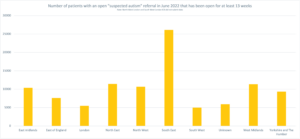The emergence of shared Leadership roles within NHS Trusts is becoming an increasing trend aligning with the NHS’ evolving need to share best practice and make significant improvements across hospitals. Recent analysis has suggested that more than one in three trusts in England now share their chair or chief executive with others. At CHS Healthcare, we view this shift as an opportunity to strengthen collaboration, innovation, and efficiency within our NHS, and support our Trust and ICB partners in embracing changes that contribute to the betterment of healthcare delivery for all.
In this blog, we reflect on the implications of this shift towards collaborative leadership and how it aligns with our commitment to innovative and effective healthcare management that ultimately has the wellbeing of the patient at heart.
Will a shift in leadership dynamics positively impact service delivery in Trusts?
Of the total 211 trusts in England, 71 now have a joint chair or chief executive, or will be moving to this arrangement shortly. This change is often a natural step forward, with many trusts already pooling resources to the benefits of patients.
There is currently very little national policy around shared leadership. The benefits of this approach are likely to be specific to different areas, the structure of trusts and the needs of communities.
Often the move to appoint a shared leadership team is driven by a need to deliver services for local people, within the context of restricted budgets. With less resource, reducing duplication and sharing knowledge can help services do more with less.
What about the impacts on Governance and Decision-Making?
Shared roles can have profound impacts on governance and decision-making processes; fostering synergy, encouraging diverse perspectives, and promoting a more inclusive decision-making environment, all of which are integral to driving positive changes in healthcare delivery.
This could have benefits for hospital discharge, where the burden of admin is felt by individuals. In our 2022 staff survey, 49% of hospital staff surveyed said that paperwork, admin and bureaucracy causes discharge delays, 45% of their time is taken up with arranging discharge for patients who require additional support or a new placement and 22% said it takes them away from vital work. For patients who need additional support or new placement, on average 31 contacts with a range of people, e.g. patient’s family and carers, community nursing teams, local authority adult social care team, are needed to complete discharge. There is hope that shared decision making could lead to closer alignment between services, and reduced admin burden.
Could it enhance efficiency and innovation?
By pooling resources, knowledge, and experience, and potentially whole teams, there is an argument that Trusts may be able to navigate challenges more effectively, ultimately improving the quality of care provided.
One example of the impact of shared leadership can be found in the work between Brighton and Sussex University Hospitals NHS Trust (BSUH) and Western Sussex Hospitals NHS Foundation Trust (WSH). BSUH and WSH established shared leadership team with a substantially shared board. This allowed BSUH to exit special measures and improve its CQC rating to ‘Good’ in 2019. This was supported by “the implementation of a continuous improvement methodology and alignment of governance, risk management and internal control processes”, driving improvements for patients.
Fostering Collaborative Partnerships is key:
The shift towards shared leadership roles in trusts is indicative of a broader trend in healthcare management – fostering collaborative partnerships. At CHS Healthcare, we understand the transformative impact of collaborative efforts. Our partnerships with the NHS, local authorities, and other stakeholders have been instrumental in delivering integrated, patient-centred care.
As shared leadership becomes increasingly prevalent within NHS Trusts, CHS Healthcare remains at the forefront, ready to collaborate and innovate for the benefit of the communities we serve. The essence of collaborative leadership resonates with our core values, and we strongly believe in the power of partnerships and collaborative efforts not only in healthcare management, but also between the private and public sector. Shared leadership roles align with our commitment to creating integrated healthcare solutions that leverage the collective expertise of professionals for the benefit of patients and communities.
Call 0121 362 8840 or email maria.knowles@chshealthcare.co.uk or philippa.grotzke@chshealthcare.co.uk









